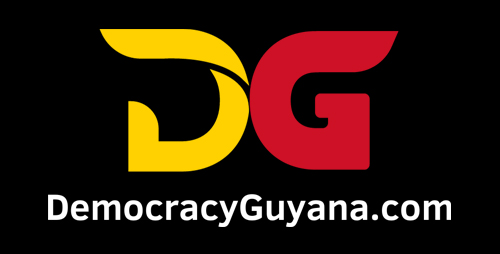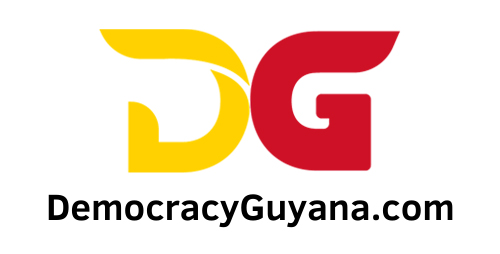In a failed attempt at political point-scoring, a member of the minority opposition—purporting to speak as its parliamentary lead (Terrence Campbell)—claimed that capital flight signals a loss of confidence in the economy. This assertion followed President Irfaan Ali’s engagement with commercial bank executives (this evening), where His Excellency outlined new measures to address the chronic forex liquidity constraints associated with Guyana’s rapidly expanding oil economy.
The opposition member cherry-picked a single term used by the President, stripped it of context, and tried to frame it as evidence of eroding investor confidence. This narrative, however, has no basis in fact.
The data simply does not support any claim of lost confidence:
• Guyana’s economy has expanded nearly sixfold since first oil.
• Financial sector indicators are at record levels.
• Credit to the private sector and deposits in the banking system have grown more than fourfold in the past five years.
The fundamentals remain strong. The real issue is not capital flight in the textbook sense, but rather compliance and enforcement. What is at play is an increasingly complex problem of capital and tax evasion!
𝐖𝐡𝐚𝐭 𝐈𝐬 𝐀𝐜𝐭𝐮𝐚𝐥𝐥𝐲 𝐇𝐚𝐩𝐩𝐞𝐧𝐢𝐧𝐠
Some companies request payments for goods and services through offshore accounts. This practice enables them to understate revenue locally and evade taxes. This is not about confidence in the economy; it is about regulatory breaches and leakages.
In fact, I personally reported one such case to the GRA, involving a Joint Venture between a local and a regional company. The scale of evasion exceeded $100 million in my estimation, and the matter is now before the courts, triggered by my report on behalf of the local company.
These are precisely the types of practices that the new measures outlined by His Excellency are designed to combat.
𝗛𝗮𝘃𝗶𝗻𝗴 𝘀𝗮𝗶𝗱 𝘁𝗵𝗮𝘁, 𝘆𝗲𝘀𝘁𝗲𝗿𝗱𝗮𝘆, 𝗦𝗲𝗽𝘁𝗲𝗺𝗯𝗲𝗿 𝟮𝟵, 𝟮𝟬𝟮𝟱, I gave an exclusive interview (via telephone) to NCN News on the subject of the foreign currency shortage. (This interview will be aired tomorrow evening on NCN’s news program.)
The questions posed were:
1. How can Guyana manage the foreign currency pressure stemming from the growing presence of Trinidadian companies?
2. What strategies could be implemented to offset the rising demand for U.S. dollars driven by increased imports?
3. Should the Central Bank adjust its purchasing practices to protect reserves—and if so, how?
4. What long-term policies could ensure a stable foreign exchange market while supporting growth from the oil boom?
5. Should the Central Bank play a more active role in monitoring the market to prevent capital flight and exploitation by companies?
6. What is the role of non-bank Cambios in the current foreign currency environment?
𝗠𝘆 𝗥𝗲𝘀𝗽𝗼𝗻𝘀𝗲
Interestingly, my remarks in this interview aligned closely with the measures later outlined by His Excellency.
On the role of the Central Bank, I emphasized the need for strengthened monitoring—not only by the Bank itself but also in coordination with the Guyana Revenue Authority and the Local Content Secretariat. I highlighted instances of leakages in the local content sector, where some Joint Ventures under-report revenues in Guyana, raise invoices abroad, and remit payments outside of the country. This results in tax evasion and disguised capital movement, as noted earlier.
At the macro level, I stressed that Guyana does not face a genuine “shortage” of foreign exchange. Instead, we are dealing with liquidity constraints—a natural outcome of rapid economic expansion. Imports have risen from under US$1 billion pre-oil to nearly US$7 billion by December 2024. Yet total net foreign assets—including the Central Bank, commercial banks, and the NRF—stood at US$5 billion in June 2025, equal to 9 months of import cover (three times the minimum threshold). This reflects strong reserve coverage.
On Central Bank interventions, I noted the need for carefully calculated intervention to avoid Dutch disease or an over-appreciated exchange rate, both of which could damage the productive and manufacturing sectors.
𝗟𝗼𝗼𝗸𝗶𝗻𝗴 𝗔𝗵𝗲𝗮𝗱 (𝗘𝗮𝘀𝗶𝗻𝗴 𝗼𝗳 𝗹𝗶𝗾𝘂𝗶𝗱𝗶𝘁𝘆 𝗽𝗿𝗲𝘀𝘀𝘂𝗿𝗲𝘀)
• Medium term (2026): The Gas-to-Energy project will cut the fuel import bill by roughly one-third, saving around US$300 million annually and immediately easing forex pressures.
• Long term: Continued economic diversification will strengthen the non-oil trade balance. Over time, this will reduce the deficit or even shift to a surplus, further bolstering forex liquidity and macroeconomic stability.
𝗞𝗲𝘆 𝘁𝗮𝗸𝗲𝗮𝘄𝗮𝘆: Guyana’s challenge is not a shortage of foreign exchange but the management of liquidity pressures in a rapidly expanding economy. With strengthened enforcement, policy coordination, and strategic diversification, Guyana is well positioned to maintain stability and sustain inclusive growth.
𝗞𝘂𝗱𝗼𝘀 𝘁𝗼 𝘁𝗵𝗲 𝗣𝗿𝗲𝘀𝗶𝗱𝗲𝗻𝘁 𝗳𝗼𝗿 𝗰𝗼𝗻𝗳𝗿𝗼𝗻𝘁𝗶𝗻𝗴 𝘁𝗵𝗲𝘀𝗲 𝗶𝘀𝘀𝘂𝗲𝘀 𝗵𝗲𝗮𝗱-𝗼𝗻 𝘁𝗼 𝗺𝗶𝘁𝗶𝗴𝗮𝘁𝗲 𝘁𝗵𝗲 𝗿𝗶𝘀𝗸𝘀. 𝗧𝗵𝗲 𝗻𝗲𝘄 𝗺𝗲𝗮𝘀𝘂𝗿𝗲𝘀 𝗮𝗿𝗲 𝘄𝗲𝗹𝗰𝗼𝗺𝗲𝗱.





